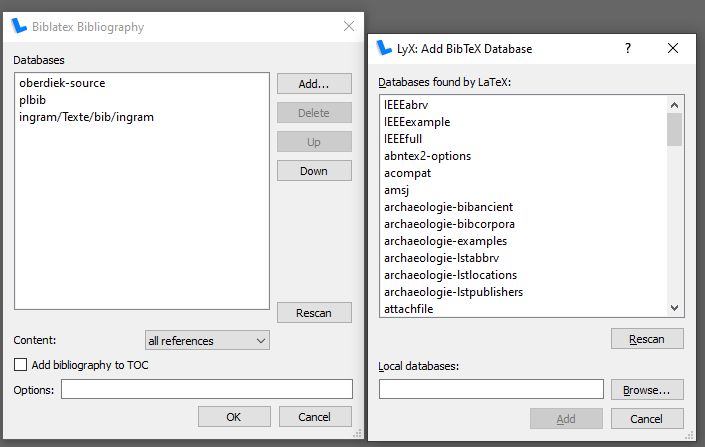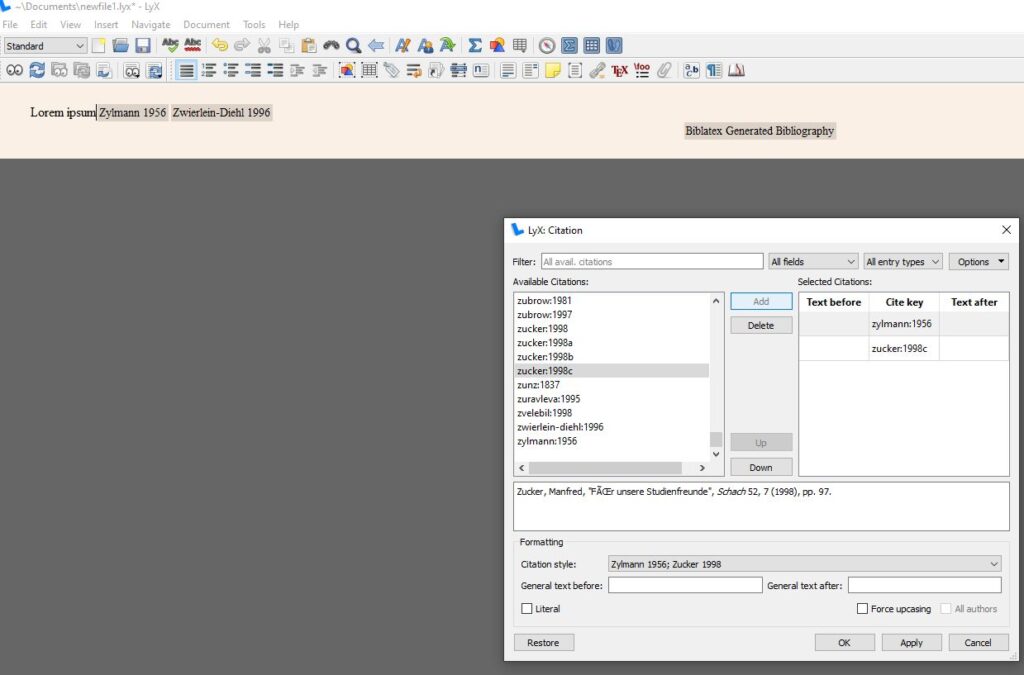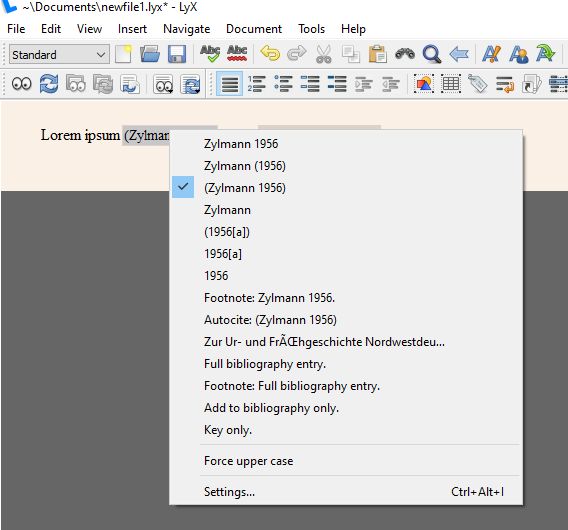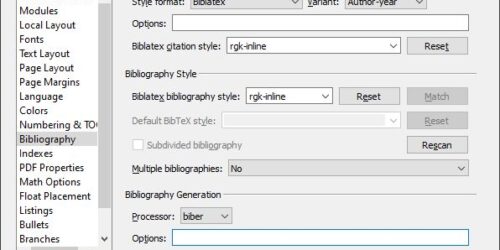LyΧ is an editor for LaTeΧ that resembles WYSIWYG (What You See Is What You Get) editors like Microsoft Word or LibreOffice. This is achieved by employing a HTML like reduced command set screen output and full LaTeΧ for printable formats. Thus the applicable LaTeΧ commands are limited to those for which screen macro complement is available. It is possible to input raw LaTeΧ code and to define HTML equivalents on your own, of course. But this needs either advanced LaTeΧ knowledge or some deep insight into LyΧ. Remark that many LaTeΧ commands do graphics, not text.
Since version 2.3 LyΧ provides native biblatex support. The current release I use here is 2.3.6.1. At least since version 2.3.4.1. the additional styles provided by biblatex-archaeology are natively supported (based on release 2.2 by now). You can choose the way bibliographies are processed per document in Document → Settings → Bibliography (see screnshot) and save it as default if you like.

LyΧ only supports author date and numeric styles, although the verbose styles shipped with biblatex-archaeology are available in the corresponding selection lists. As the citation commands are the same you can choose a verbose style for your PDF but the HTML output on screen will not display it.
Next step is to select databases. Follow the path Insert → List / TOC → Bib(La)TeX Bibliography… and an empty list will pop up. Press Add for a file selector. If the document is not ready yet, the Content selector should be set to all references in order to read the whole database (and not only those entries which were cited previously).

By selecting Insert → Citation there is access to a list of all imported BibTeΧ entries. Remark that there is no access to citation commands here.

By clicking on the label you get access to a formatter (which means to various citation commands on the LaTeΧ side). Again, this is made for numeric or author year stiles, not for verbose ones. None of the additional biblatex-archaeology commands is available here.

To conclude it can be said that LyΧ is no doubt a very clever approach to a visual LaTeΧ editor. But this is achieved by limiting the LaTeΧ code to a wide range of more or less common cases. Most of the additions biblatex-archaeology provides for special purposes are not supported. If you are going to write a large paper like a thesis you are probably better off with learning LaTeΧ deeply. And keep in mind that you pay the alleged simplicity of LyΧ in small documents with the loss of self-accomplished semantic markup, which will be more and more important as the documents grow!


Leave a Reply